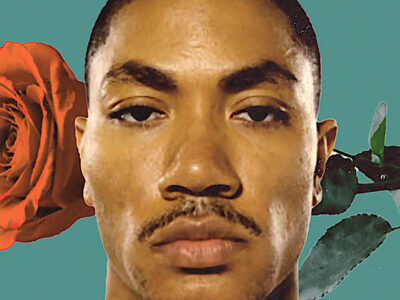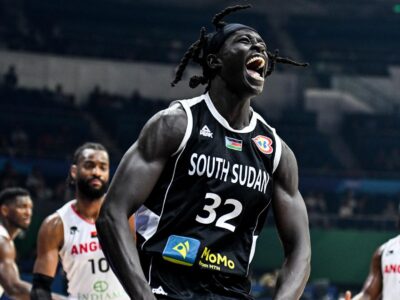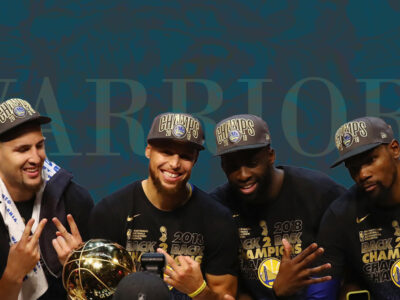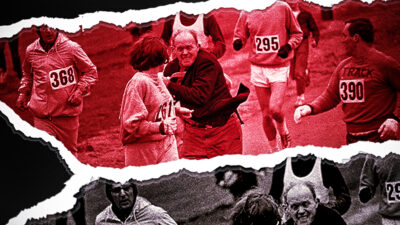Sometime in 2014, I told my friend in high school that women playing basketball would garner massive media coverage in the near future. I was laughed out of the gym.
As bizarre as it might have sounded back then, women’s college basketball and the WNBA have spiked in popularity in 2024: record viewerships, mainstream controversies, and rookie superstars point to this trend.
It turns out that two of the stars responsible for the current buzz—Caitlin Clark and Angel Reese—were drafted into the WNBA before the commencement of this year’s regular season.
Let’s take a deep dive into the origins of this rivalry that sparked the WNBA into life.
The Rising Stars of Women’s Basketball
Caitlin Clark and Angel Reese have emerged as two of the brightest starlets in women’s basketball, each with their unique talents and skills.
Caitlin Clark, known for her incredible shooting ability and playmaking skills, has become a standout player for the Indiana Fever.
On the other hand, Angel Reese, who plays for the Chicago Sky, is renowned for her physicality, rebounding, and inside-scoring prowess.
The pair first faced each other on the court in February 2021. However, their rivalry reached a pinnacle in the 2023 NCAA Women’s Basketball Championship game.
The moments when Reese mimicked Clark’s signature “You can’t see me” gesture and subsequently pointed to her ring finger to indicate an imminent championship ring added fuel to the rivalry, generating widespread media attention.
The following matchup between both players generated just as much fuss as the previous.
Clark was triumphant this time, with Reese again gesturing with a shrug, implying “there was not much she could do” after Clark hit a three-point shot contested by Reese.
Their rivalry, as well as the excellence of veterans like A’ja Wilson and Sabrina Ionescu, has significantly contributed to the renewed attention to women’s basketball.
Their duels have become a focal point for fans, creating excitement similar to historic NBA rivalries and boosting interest in the WNBA.
Caitlin Clark
Caitlin Clark has rapidly become known as a sharpshooter phenomenon in women’s basketball, captivating fans and analysts alike with her exceptional scoring ability and basketball IQ.
Born and raised in West Des Moines, Iowa, Clark was a standout high school player. She quickly made a name for herself as one of the top recruits in the country.
Her decision to stay home and play for the University of Iowa marked the beginning of a remarkable college career.
Clark’s ability to score from anywhere on the court, especially her deep-range shooting, sets her apart.
She regularly pulls up from well beyond the three-point line with ease, often sinking shots that seem almost impossible.
This long-range prowess has drawn comparisons to NBA sharpshooters like Stephen Curry and Damian Lillard.
One could even argue that she has a further range than most NBA sharpshooters due to her average three-point distance compared to them.
Caitlin Clark has an average 3PT shot distance of 28.04 feet (WNBA 3PT line is roughly 22 feet).
— StatMamba (@StatMamba) June 14, 2024
Her 2.6 3PM is the most by a rookie since 1997. pic.twitter.com/lgP5Z4k4Uf
Throughout her college career, Clark delivered numerous highlights, including multiple 40-point games and record-setting performances.
However, Clark is more than just a scorer; her court vision and playmaking ability make her a dual threat.
She leads her team in assists, finding open teammates with precision passes, often threading the needle in tight spaces.
It was not surprising that she was crowned rookie of the year after the conclusion of the WNBA regular season.
Angel Reese
Originally from Baltimore, Maryland, Reese was a highly-touted recruit in high school. After transferring from the University of Maryland to LSU, she quickly became a central figure in the Tigers’ success.
Reese’s physicality is one critical aspect of her dominance. At 6’3″, she combines size, strength, and agility to control the paint on both ends of the court.
Her rebounding prowess is remarkable. She outmuscles opponents for rebounds, particularly on the offensive glass, giving her team second-chance opportunities that often turn into points.
More than just a physical player, Reese has developed into a leader, both vocally and through her on-court performance.
She leads by example with her relentless effort, competitive drive, and defensive intensity, setting the tone for her teammates.
In the 2023 NCAA Tournament, Reese played a pivotal role in LSU’s national championship run, averaging a double-double throughout the tournament and showcasing her ability to perform in high-pressure situations.
Her rookie season saw her set several records, notably having the record for the most consecutive games with a double-double a few games into her WNBA career.
Playing Styles
Clark and Reese have contrasting play styles and approaches to the game, each showcasing their unique strengths and skills.
The main difference is their respective positions on the court. While Caitlin Clark is a guard, Angel Reese is predominantly a forward who can play the center position.
Their respective play styles also highlight their differences. Clark has always been a primary ball handler, responsible for starting and running most of her team’s offensive strategies.
On the other hand, Reese plays the game like a “traditional big”. She occupies the paint and relies heavily on her strength and post control to attempt shots and gain second-chance points.
Their contrasting approach to the game is also worth mentioning.
Clark’s offensive prowess is the bedrock of her game. Players like her are capable of unlocking a team’s defense in several ways, making it very hard for opponents to guard them.
Reese’s defensive acumen makes her a force to reckon with when opposing players attempt to make shots in or around the paint. She consistently blocks shots, forces turnovers, and grabs defensive rebounds.
During their respective rookie seasons, Clark led the WNBA in assists per game, averaging 8.4 APG, while Reese led the WNBA in rebounds per game, averaging 13.1 RPG.
In the course of the regular season, Clark’s Indiana Fever faced Reese’s Chicago Sky four times. Indiana won all three of the four matchups—the final score never exceeded a one-point margin.
The Ugly Racial Component
The media push behind Caitlin Clark has sparked conversations among many black players and fans. The undertones suggest subtle implications of racial bias in the overwhelming attention she receives compared to black female athletes of similar or more remarkable achievements.
Historically, people have not given black basketball legends like Sheryl Swoopes, Maya Moore, and even current stars like A’ja Wilson the same level of public relations effort or media saturation that Clark enjoys.
Some believe that this disparity is due to a long-standing racial bias, where white athletes are more celebrated than black athletes, even when they achieve similar levels of success.
Prominent commentators have weighed in on this topic.
Sports analyst Pat McAfee, for example, noted Clark’s undeniable exceptional skill but questioned the disproportionate media focus on her over other players.
Additionally, a wave of new WNBA fans—mostly young white men—have rallied around Clark, seeing her as a generational talent and a victim of discriminatory coverage.
Some of these fans have turned Clark’s journey into a crusade, positioning any opposition to her as a battle they must win, which has added a divisive layer to the conversation.
One of the most prominent moments highlighting this racial tension came during their time in college. Caitlin Clark received an invitation to the White House despite losing the NCAA finals. This broke from tradition, as typically only the winning team is honored.
Angel Reese commented that she would decline the invitation. She said that no other runner-up had been given that privilege, implying that Clark’s race may have played a role in this exceptional treatment.
This incident deepened the discussion about how racial bias can influence the way athletes are celebrated or ignored in the media and beyond.
Impact on the WNBA
The WNBA has seen a significant rise in viewership and popularity due in part to the rivalry between Angel Reese and Caitlin Clark, which has brought newfound excitement to women’s basketball.
The dynamic between Reese and Clark has captivated fans and sparked increased media coverage.
The 2023 NCAA Women’s Basketball Championship game, in which Reese’s LSU team defeated Clark’s Iowa squad, broke viewership records, highlighting the draw of their rivalry.
How it started: How it’s going:#wnba pic.twitter.com/RgTf752teb
— The Crown 👑 (@thecrownliberty) September 2, 2024
This rise in engagement has not only boosted WNBA viewership but also generated significant social media buzz, with posts and highlights from games regularly going viral.
Fans engage passionately, debating who the superior player is and rooting for their favorite to outshine the other.
This level of fan engagement has broadened the WNBA’s audience, especially among younger fans who follow players’ journeys from college to the pros.
A social media post by a WNBA team fan account recently pointed out the number of fans at the team’s arena a few years ago compared to last season.
The rivalry has brought a level of mainstream attention only seen in women’s football, driving more investment and sponsorship opportunities.
Marketing and Sponsorship Force
Angel Reese and Caitlin Clark are rapidly becoming influential figures off the court. They are building their brands through endorsement deals, partnerships, and strategic social media use.
Reese, known for her outspoken personality and powerful presence, has signed endorsement deals with brands that align with her bold style and confidence.
Clark, on the other hand, has partnered with brands that highlight her skill and dedication to the sport, appealing to fans drawn to her eye-catching skills and competitive spirit.

The introduction of Name, Image, and Likeness (NIL) deals has transformed college sports by equipping college athletes for professional success early in their careers.
This means that both Caitlin Clark and Angel Reese were able to monetize some of their popularity even back in college.
Social media plays a pivotal role in shaping their public personas and expanding their reach beyond traditional sports audiences.
Reese’s Instagram and TikTok accounts feature her expressive, unapologetic self, resonating with fans who appreciate her authenticity and confidence.
She regularly shares behind-the-scenes glimpses, connecting personally with followers and further solidifying her influence.
Clark, while more reserved, uses her platforms to showcase her hard work, training routines, and love for the game.
This social media presence has amplified their endorsement value, making them both highly marketable figures who attract diverse audiences.
Breaking Stereotypes in Women’s Sport
Clark and Reese are challenging gender and racial stereotypes in basketball, reshaping the public’s perception of female athletes through their dynamic performances and off-court influence.
Both players are outspoken advocates for equality in sports, using their platforms to spotlight disparities in media coverage, pay, and investment between men’s and women’s sports.
Reese has been particularly vocal about issues of race, highlighting how black female athletes often receive less recognition and face more scrutiny than their white counterparts.
Her outspoken nature has spurred her to create her podcast show, “Unapologetically Reese”. This gives her a platform to air her views and opinions on several topics relating to women’s basketball.
Clark has also addressed gender inequities, speaking on how women’s sports deserve equal respect and investment.
Their collective influence has spurred discussions on the systemic obstacles female athletes face, encouraging a broader shift in how women’s sports are supported.
However, the sailing has been rough. These young women have had to overcome the same hurdles that people like Serena Williams, Danica Patrick, and Megan Rapinoe had to overcome.
Angel Reese often faces criticism rooted in racial and gender biases, with her confidence sometimes interpreted negatively.
Clark, too, faces pressures tied to her rise in popularity, with the weight of expectations and scrutiny that comes with being a prominent figure in a male-dominated media landscape.
Both athletes encounter the persistent double standards that affect women in sports, yet continue to use their influence to push for inclusivity, setting powerful examples for future athletes.
The Future of the WNBA with Clark and Reese
Caitlin Clark and Angel Reese are poised to lead a new era in the WNBA, bringing fresh talent, charisma, and a dedicated following that could redefine the league’s future.
With their contrasting yet equally captivating styles, Clark and Reese embody the diverse skill sets and personalities that make basketball exciting.
Their infant yet established status in the WNBA is expected to boost fan engagement, attract new audiences, and draw even more attention to women’s basketball.
Through their success and visibility, Clark and Reese are breaking down barriers, proving that women’s sports can achieve high viewership and fan support.
They demonstrate that female athletes can be authentic, competitive, and influential without compromising their personalities.
This visibility is crucial for young girls in sports who seek role models that resonate with their aspirations.
They have the potential to elevate the league, inspire more significant investment in women’s sports, and contribute to the movement for gender equity in athletics.
There is still a lot more to come, but we can expect them to be prominent figures in the WNBA in subsequent years, both on and off the court.
Cementing their Legacies
With different performances expected from them during their rookie season, both players have been able to perform at a level uncharted by most rookies.
Both players’ teammates, as well as other top players in the league, have benefitted from the influx of fans, with viewership and coverage of the postseason at an all-time high.
Their influence also pressures the WNBA and sports organizations to invest more in women’s sports, leading to enhanced coverage, improved salaries, and a greater focus on player development.
The league’s trajectory is undoubtedly on the rise. With more college stars like Juju Watkins and Paige Bueckers poised to join the WNBA, fans and media outlets would have more reason to create narratives and talking points.
However, this rivalry could also have potential downsides.
The intense media focus on Reese and Clark may lead to unnecessary divisions among fans, sometimes with racial undertones, detracting from the inclusivity women’s sports strive to promote.
Additionally, the pressure and expectations placed on both athletes could result in burnout or undue scrutiny.
Still, the overall impact of their rivalry promises to be transformative as Reese and Clark continue to redefine success in women’s basketball, leaving a lasting legacy that pushes the sport toward greater prominence and equity.
Who wrote this?
Bienuoma Agaga-Akpati is a software engineer, writer, eSports player, and sports enthusiast, presently working with a group of ambitious Africans to transform the writing industry. With good knowledge of various sports and eSports, coupled with his keen ability for research, he loves analyzing ideas and topics that fosters the growth of the sport and eSports scenes. In his spare time, he enjoys creating content and engaging in discussions across various platforms.






















